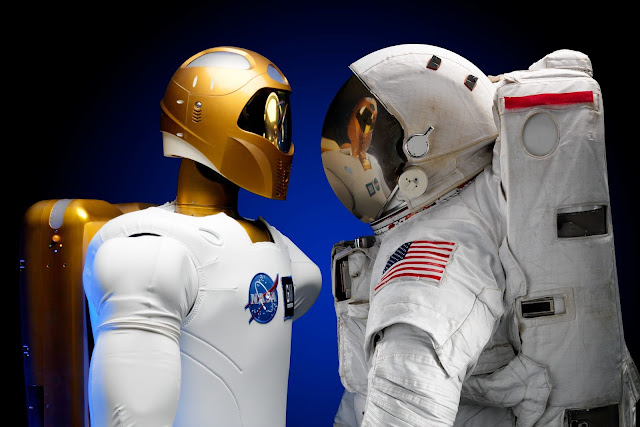The mind-controlled robotic arm will lend you a third hand
For quite a long time, researchers have been investigating how we can utilize signals from the cerebrum to control prosthetic arms. More often than not, this work is centred around reestablishing engine capacity to individuals who have lost an arm or a leg, however new research from Japan demonstrates how a similar innovation can likewise be utilized to enlarge existing human abilities. |
| Mind-controlled robotic arm |
Specialists from Kyoto's Advanced Telecommunications Research Institute have exhibited how individuals can be educated to control a third mechanical arm with their brains, notwithstanding utilizing the appendage to multitask. As depicted in a paper distributed in the diary Science Robotics today, eight of 15 test subjects could effectively adjust a ball on a board with their hands, while getting a water bottle with a mind-controlled robot arm.
In spite of the fact that this may seem like something out of sci-fi, it's imperative to pressure that the usefulness of this third arm is amazingly fundamental. The prosthetic moved along a foreordained way and performed just a solitary signal: shutting and opening its hand. So also, the cerebrum machine interface used to control the arm isn't some otherworldly personality perusing gadget. It's a top fitted with cathodes that measure electrical signs delivered by the mind. For this situation, members were requested to envision opening and shutting the robot hand. The researchers recorded this flag and transformed it into a direction for the robot arm.
"What we're estimating is spillage from the mind's electrical action," Shuichi Nishio, one of the scientists engaged with the examination, discloses to The Verge. "We need to tune [the cerebrum machine interface] for every member; choosing the correct anodes and frequencies."
Indeed, even with these confinements, however, it is exceptionally fascinating work. As Nishio and his partner Christian Peñaloza bring up in their paper, it is by all accounts the first run through supernumerary appendages have been controlled utilizing the human mind. Normally such prosthetics are worked utilizing joysticks or if associated straightforwardly to the human body, electrical signs from muscles.
Past research around there provides some insight into the matter of how additional appendages may be utilized on the off chance that they wound up regular later on. This idea gadget from MIT, for instance, gives clients two additional mechanical "arms" that are worn as a knapsack. The makers figured these arms could be utilized as a part of assembling; holding instruments and parts, or supporting a specialist's body in the event that they're hunching down in one place for a broadened time-frame. On the off chance that such robot arms could likewise be controlled by the cerebrum, they could turn into a consistent augmentation of the body.
For Nishio and Peñaloza, supernumerary appendages may expand something beyond our physical capacity — they may enhance our brains, as well. In their paper, the match noticed that amid the multitasking challenge, members' execution part into two unmistakable gatherings: the individuals who were great and those were terrible, with barely anybody in the centre. This was rather than the execution when people were requested that simply control the robot appendage without anyone else's input. In this single-assignment challenge, all members did about the same, performing quite well.
This distinction, say Nishio and Peñaloza, proposes a few people are simply preferred at multitasking over others. Furthermore, if that is the situation, at that point possibly multitasking is an aptitude that could be enhanced by utilizing these sorts of mind-controlled gadgets. "By working this mind-machine interface, we have a thought that we might have the capacity to prepare the cerebrum itself," says Nishio.
This presently can't seem to be demonstrated, yet the match wants to chip away at the thought in future tests. All things considered, in the event that you can figure out how to control three arms, at that point doubtlessly controlling two is no problem.



 Whatsapp group link
Whatsapp group link

 Posted in:
Posted in: 
0 Comments:
Post a Comment